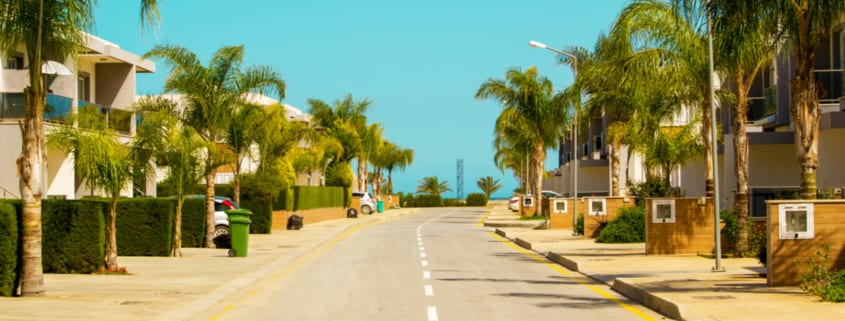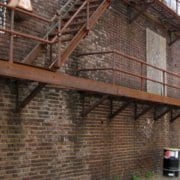The State of Senior Housing in 2020
The senior housing market is maturing and evolving, with an increasing number of investors giving new consideration to this asset class. Some changes are driven by market conditions, some by consumer preferences, and some by changing demographics. But in general, seniors are looking for living options that cater more to their lifestyle and provide rewarding experiences, rather than solely accommodating the nature of their aging.
What is Driving Demand for Senior Housing?
One of the biggest factors driving demand for senior housing is an aging population. Every day, 10,000 Baby Boomers turn 65 years old, and by 2040, there are predicted to be more than 80 million people over the age of 65. Further, this generation is expected to enjoy a longer lifespan than those generations prior. As such, the market (and demand) will continue to grow.
Secondly, despite oft-cited news articles that report elderly parents moving back in with their kids en masse, senior housing occupancy remains steady. Consolidation in the healthcare segment is also bringing senior housing to the forefront of people’s minds and drawing more attention to opportunities in the marketplace. As demand catches up to and begins to exceed supply, developers and investors are taking steps to prepare for this wave of retirees – the “silver tsunami”.
How is the Market Evolving?
Senior housing in the past was often negatively associated with a loss of independence, privacy, and dignity – somewhere that family members felt guilty about sending their loved ones. But senior housing has come a long way in recent years. Further, the average senior housing resident is older than 80, but younger seniors begin to look at changing their living situation long before hitting this age. In fact, people as young as 55 are looking at retirement living options, presenting a unique set of expectations and challenges.
Read ahead to learn about different ways the market is evolving to accommodate these changing demands and expectations.
Location
Senior housing facilities have historically been located primarily in the suburbs, where there was more land available and at a much lower cost. Now with a risk of over-building in the suburbs and increasing demand for walkable communities, the market is trending toward urban locations. In fact, 80% of Baby Boomers who currently live in an urban area want to remain in the city throughout their retirement. Further, the games of golf, craps, and shuffleboard that are traditionally associated with retirement living just won’t cut it anymore. Today’s active seniors want cultural activities, dining, shopping, parks, cafes, libraries, etc. – all within walking distance.
Types of Facilities
The senior housing market is seeing a shift from nursing care toward independent living, assisted living, and seniors-only apartment space, as well as from single-level-of-care to continuum-of-care facilities. These “aging in place” facilities make it easier for family members, who don’t have to worry about finding new housing for family members later on in the aging cycle, as well as allow couples to stay together, even after they require different levels of care.
Senior housing is also trending away from age-centric identification (i.e. ages 55 – 65 belong in X type of facility, ages 65 – 75 belong in Y type of facility, etc) and more toward affinity branding (i.e. if you like the beach, you should consider this type of facility; if you enjoy museums and galleries, you should consider that type of facility; if you enjoy tennis and swimming you should consider this other type of facility). In this way, senior housing is moving away from a “one size fits all” approach and more to an individualized care and housing solution. This also presents the opportunity for retirement communities to differentiate themselves in the marketplace. These trends will continue into 2018 and beyond as options for accessibility, location, and unit design become even more personalized and experience-based.
Services, Amenities, and Experiences
Expectations for senior housing are constantly changing as new generations reach the point where they need to consider retirement living. One of the biggest trends recently is around creating experiences. Improving the dining experience in particular is playing a big role in driving satisfaction ratings. Restaurant-style dining options are becoming mandatory in order to remain competitive. Some facilities are even offering food court-style or station-style dining options, which they are then offering to the surrounding community for weekday paid lunches. New strategic business opportunities such as this boost the experience for residents but also generate new channels of revenue.
Secondly, the industry is shifting toward resort-style living. Think indoor and outdoor dining areas, fitness centers, live entertainment areas, bars, cafes, pools, art studios, movie theaters, game rooms, rooftop terraces, and concierge services. Residents demand more choices and options, particularly as they relate to activities, meals and eating times, and living arrangements. Further, with “Gray Divorce” on the rise (the divorce rate for Americans 50+ has more than doubled since the 1990s), communities will need more opportunities for singles to meet and mingle.
Unit Design
The market is not shifting toward larger units but, rather, better-designed units. Bare, sterile units are a product of the past, with a preference instead for boutique, high-end interior design. Instead of just apartment-style units, residents now have options that include villas and cottages, assimilating more traditional housing. Some even offer customizable options, such as cabinets, flooring, and finishes. This level of personalization provides an opportunity for properties to stand out from their competition, as well as to create a more unique living experience, without necessarily driving up the cost for residents.
Why Should Investors be Interested?
The senior housing market doesn’t necessarily follow the ebbs and flows of commercial real estate at large and is generally recession-proof. Demand will only continue to grow – the question is only whether the market can keep pace. This asset class is also very profitable. In 2016, the average price per unit was $160,000 – an increase from $140,000 just 5 years prior.











